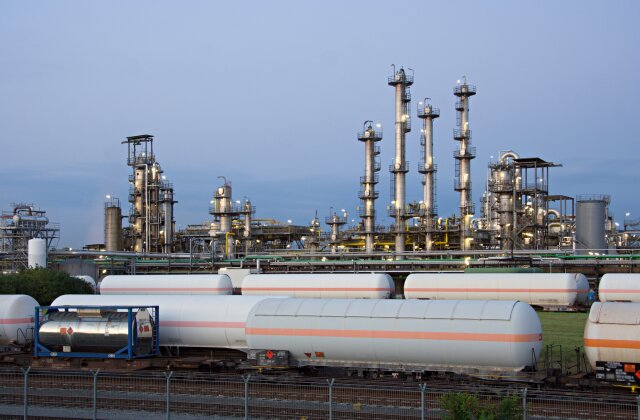Unlocking Potential xle: A Deep Dive into the Energy Select Sector SPDR Fund (XLE) Performance and Future Trends

In an era where energy production and consumption are at the forefront of global discussions, understanding the performance of energy-focused investments has never been more critical. The Energy Select Sector SPDR Fund (XLE) has historically been a key player in this landscape, offering investors exposure to the diverse and dynamic energy sector. As we delve into XLE’s past performance and emerging trends, we will uncover the factors driving its growth and the challenges it faces in a rapidly evolving market. From fluctuating oil prices to the rising demand for renewable energy sources, the interplay of traditional and alternative energy sources is reshaping the investment landscape.
Join us as we unlock the potential of XLE, exploring its implications for future investments and the broader energy sector in a world increasingly focused on sustainability and innovation. This deep dive promises to illuminate not only the current state but also the future of energy investments, ensuring you’re well-informed and ready to position yourself strategically.
Historical Performance of XLE: A Comprehensive Overview
The Energy Select Sector SPDR Fund (XLE) has demonstrated significant volatility tied to energy market cycles. From 2020’s pandemic-driven lows ($25.03), XLE rebounded sharply, peaking near $126.34 in 2024. However, geopolitical tensions and renewable energy pressures pushed shares to $80.50 by May 2025, down 15.3% from 2024 highs. Historically, XLE’s performance correlates closely with oil prices (96.86% revenue linkage)。 Dividends remain a key attraction, with a 3.63% yield and consistent payouts. Despite cyclical swings, XLE’s resilience in energy-driven markets underscores its role as a sector benchmark.
Key Factors Influencing XLE Performance
XLE’s performance hinges on five primary drivers:
1. Oil Price Volatility: WTI crude fluctuations directly impact XLE’s holdings, with a 10% oil price drop potentially slashing XLE’s annual cash flow by $4 billion.
2. Supply-Demand Dynamics: Global oil oversupply and OPEC+ production cuts shape sector profitability.
3. Geopolitical Risks: U.S.-China trade tensions and EU tariffs (e.g., 31% on energy imports) disrupt supply chains.
4. Energy Transition Pressures: Renewable adoption and ESG mandates challenge traditional energy valuations.
5. Regulatory Shifts: Policies favoring domestic production (e.g., U.S. Nuclear Fuel Security Program) create tailwinds.
Comparing XLE with Other Energy ETFs
XLE’s broad exposure contrasts with niche energy ETFs:
ERX (Direxion Daily Energy Bull 2X): Leveraged ETF targeting 2x daily energy index returns, higher risk/reward than XLE.
OIH (VanEck Oil Services ETF): Focuses on oil equipment firms like Schlumberger, lacking XLE’s integrated energy diversity.
VDE (Vanguard Energy ETF): Similar to XLE but with lower fees (0.10% vs. XLE’s 0.13%)。
XLE’s top-heavy portfolio (ExxonMobil and Chevron comprise 40%+) offers stability but amplifies single-stock risks.
The Role of Oil Prices in XLE’s Performance
XLE’s fortunes mirror oil price trends. For example:
2020–2021 Recovery: WTI’s rebound from -$37 to $120 drove XLE’s 200% surge.
2025 Challenges: Weak Chinese demand and OPEC+ oversupply pressured WTI to $73.47/barrel, dragging XLE lower.
Analysts note XLE’s beta of 1.75, indicating amplified sensitivity to oil market swings. Investors must monitor inventory reports, OPEC+ decisions, and recession risks to anticipate price shifts.
Analyzing XLE’s Top Holdings and Their Impact
XLE’s concentrated portfolio includes:
1. ExxonMobil (XOM): 22% weighting; Guyana/Permian Basin growth targets 2.3M barrels/day by 2030.
2. Chevron (CVX): 18.5% weighting; $45B capital plan focuses on shale and LNG.
3. ConocoPhillips (COP): 7% weighting; low breakeven costs ($40/barrel) enhance resilience.
While diversification across upstream/downstream sectors provides balance, overreliance on fossil fuels exposes XLE to decarbonization headwinds.
Market Trends Affecting the Energy Sector
Three trends dominate 2025:
1. Renewable Expansion: Solar/wind growth (5% annually) pressures fossil fuel margins.
2. AI-Driven Demand: Data centers boost electricity consumption (500B kWh in 2025), favoring utilities and gas-fired plants.
3. Infrastructure Modernization: Xcel Energy’s $45B grid upgrades highlight sector-wide CAPEX shifts.
These trends favor agile firms balancing traditional and clean energy investments.
Future Projections for XLE: Expert Insights
Analysts remain divided:
Bulls: Citigroup and BofA cite XLE’s undervaluation (P/E 14.8 vs. industry 20.7) and $230–$250 price targets.
Bears: Mizuho warns of fee compression and execution risks in renewable pivots.
Consensus forecasts suggest 6%–8% annual EPS growth if oil stabilizes above $75/barrel.
Investment Strategies for XLE: Risks and Rewards
1. Long-Term Hold: Leverage dividends (3.63% yield) and sector recovery cycles.
2. Dollar-Cost Averaging: Accumulate below $85 to mitigate volatility.
3. Hedging: Pair XLE with renewables (ICLN) or utilities (XLU) to offset oil risks.
4. Monitor Holdings: Track Exxon/Chevron earnings and debt levels (XOM’s 14.6% debt-to-equity)。
Conclusion: The Future of XLE in a Changing Energy Landscape
XLE remains a vital proxy for traditional energy markets, but its future hinges on balancing fossil fuel reliance with low-carbon investments. While near-term oil volatility and ESG pressures persist, strategic holdings in high-margin assets (e.g., Permian Basin) and a 6%–8% EPS growth outlook offer contrarian opportunities. For investors betting on energy’s cyclical rebound, XLE provides diversified exposure—but those prioritizing sustainability may prefer sector hybrids or pure-play renewables.